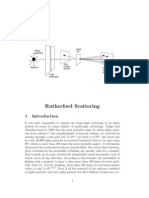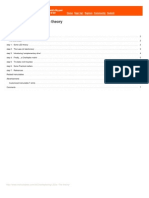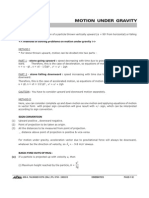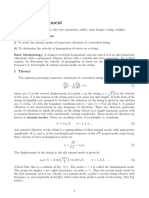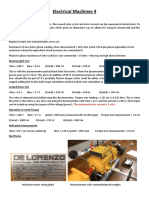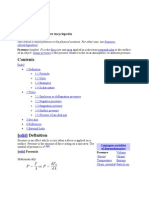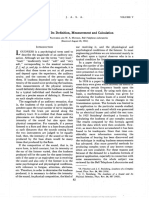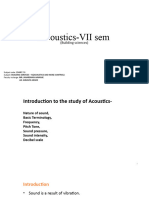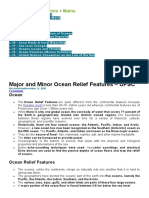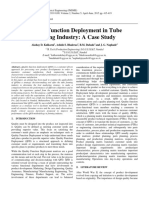0% found this document useful (0 votes)
151 views31 pagesLecture 2 (Basic Physics of Sound and The Decibe Scale)
The document discusses the basics of sound and the decibel scale. It defines sound as a series of pressure changes in an elastic medium that propagate as waves. The key physical properties of sound waves are frequency, measured in Hertz, and intensity, measured in decibels. The decibel scale is a logarithmic ratio used to quantify sound intensity levels relative to a reference value. The document outlines how frequency relates to pitch and intensity relates to loudness as perceived by the human auditory system.
Uploaded by
Geoffrey AlleyneCopyright
© Attribution Non-Commercial (BY-NC)
We take content rights seriously. If you suspect this is your content, claim it here.
Available Formats
Download as PDF, TXT or read online on Scribd
0% found this document useful (0 votes)
151 views31 pagesLecture 2 (Basic Physics of Sound and The Decibe Scale)
The document discusses the basics of sound and the decibel scale. It defines sound as a series of pressure changes in an elastic medium that propagate as waves. The key physical properties of sound waves are frequency, measured in Hertz, and intensity, measured in decibels. The decibel scale is a logarithmic ratio used to quantify sound intensity levels relative to a reference value. The document outlines how frequency relates to pitch and intensity relates to loudness as perceived by the human auditory system.
Uploaded by
Geoffrey AlleyneCopyright
© Attribution Non-Commercial (BY-NC)
We take content rights seriously. If you suspect this is your content, claim it here.
Available Formats
Download as PDF, TXT or read online on Scribd
/ 31











